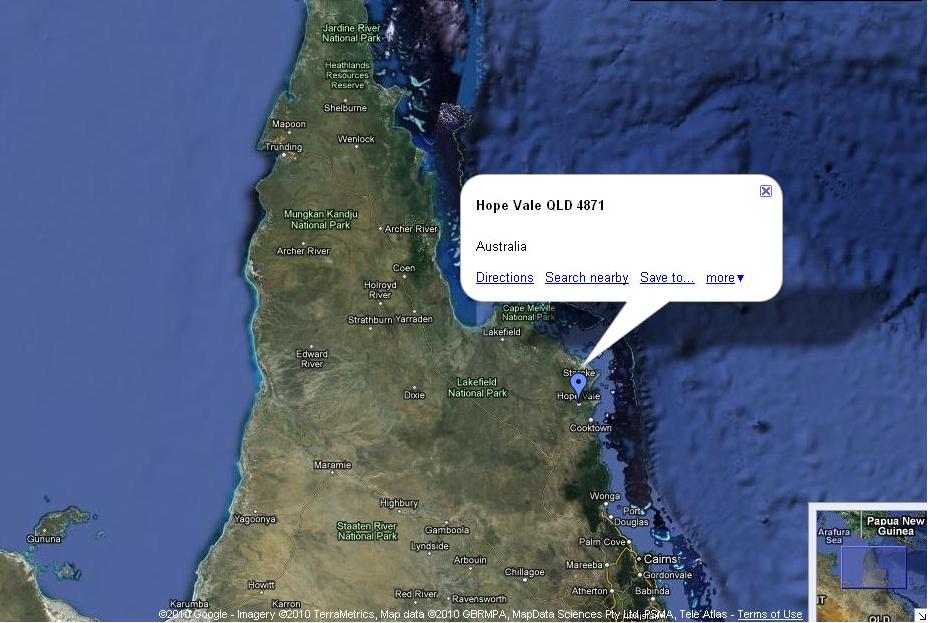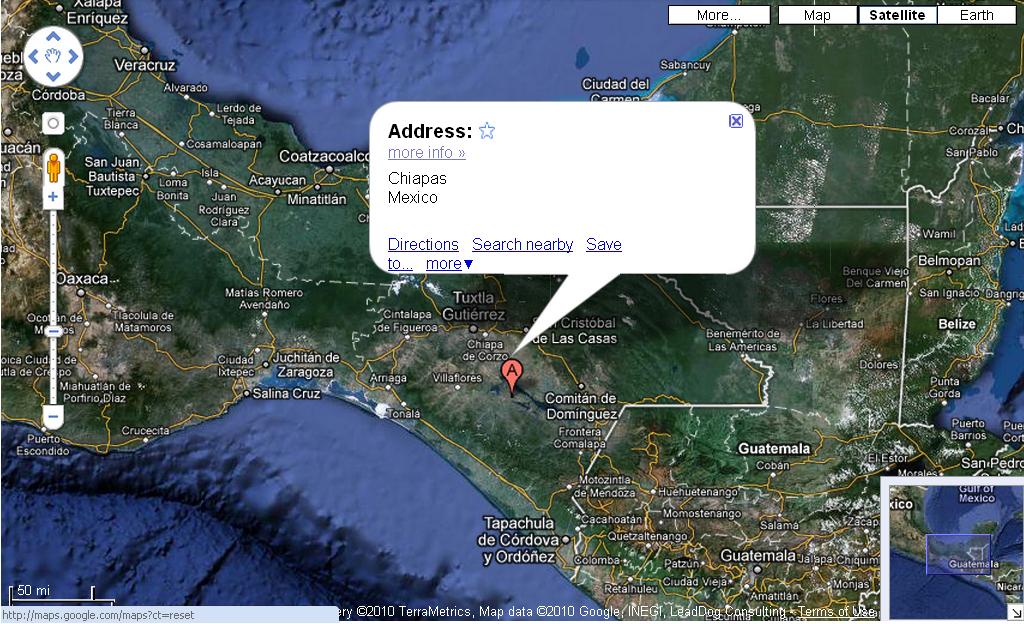Spatial orientation is crucial when we try to navigate the world around us. It is a fundamental domain of human experience and depends on a wide array of cognitive capacities and integrated neural subsystems. What is most important for spatial cognition however, are the frames of references we use to locate and classify ourselves, others, objects, and events.
Often, we define a landmark (say ourselves, or a tree, or the telly) and then define an object’s location in relation to this landmark (the mouse is to my right, the bike lies left of the tree, my keys have fallen behind the telly). But as it turns out, many languages are not able to express a coordinate system with the meaning of the English expression “left of.” Instead, they employ a compass-like system of orientation.
 They do not use a relative frame of reference, like in the English “the cat is behind the truck” but instead use an absolute frame of reference that can be illustrated in English by sentences such as “the cat is north of the truck.” (Levinson 2003: 3). This may seem exotic for us, but for many languages it is the dominant – although often not the only – way of locating things in space.
They do not use a relative frame of reference, like in the English “the cat is behind the truck” but instead use an absolute frame of reference that can be illustrated in English by sentences such as “the cat is north of the truck.” (Levinson 2003: 3). This may seem exotic for us, but for many languages it is the dominant – although often not the only – way of locating things in space.
What cognitive consequences follow from this?
Stephen Levinson, co-director at the Max-Planck-Institute for Psycholinguistics in Nijmegen, The Netherlands, argues that
“the choice of a predominant frame of reference in language correlates with, and probably determines, many other aspects of cognition, from memory, to inference, to navigation, to gesture and beyond. “ (Levinson 2003: 3).
Levinson has done much work on two languages which feature absolute frames of references:
1. Guugu Yimithirr, an Australian Aboriginal language. Levinson recounts how a Guugu Yimithirr speaker once warned him of an army ant “north of his” foot, or how another one told him where to find the frozen fish in a store that was 45 kilometres away. He pointed to his left and Levinson, just as all speakers of Indo-European and many other languages would probably do, thought he meant that Levinson would find the frozen fish on his right-hand side when he entered the shop. But in fact, he had pointed north-east and intended to communicate to Levinson that he would find the frozen fish in the north-east corner of the shop.
2. Tzeltal, a Mayan language. In Tzeltal, speakers use the hills that surround them as points of reference. If they are not in the hills, they still project their frame of reference on their environment. So a speaker asking “Is the hot water in the uphill tap?” in an unfamiliar hotel out of the hills would mean by this ‘Is the hot water in the tap that would lie in the uphill (southerly) direction if I were at home?’ (Levinson 2003: 4).
Levinson was particularly impressed by a Guugu Yimithirr speaker who, when referring to a absent person, seemingly pointed at himself but in fact pointed to the place the person had lived before. For Levinson, this indicates that
“in some striking way, the ego has been reduced to an abstract point in space. (Levinson 2003: 5)”
(This example is also mentioned in Guy Deutscher’s recent article in the New York Times. )
These experiences fit perfectly into and are supported by a more thorough and experimental investigation of this matter. But they fly in the face of much of traditional western thinking on the topic, including the consensus on the nature of spatial thinking in much of cognitive science, psychology, and linguistics which held that it was organized in a relative, egocentric and anthropocentric manner. (Levinson 2003: 10f.).
And in the chapters of his book “Space in Language and Cognition: Explorations in Cognitive Diversity” Levinson sums up a robust body of data that lend support to his thesis that spatial cognition may be differently organised in different cultures, and that the body may not be the fundamental source of our spatial concepts, neither developmentally nor cross-culturally.
However, there are still strong universal trends in cognition in the domain of space. According to Levinson the best way to accommodate all these findings is to concede that human cognition may employ several modes of internal representation and that there is no reason to assume that there is only one form of mental representation. If we accept this view, it seems much more logical to state that the internal representations accessed by and linked to language and cultural practices are in some way influenced and shaped by these linkages (Levinson 2003: 21f.).
Levinson sums up the key issues that recur throughout his book as follows:
- “What are the ‘natural’, pre-linguistic or innate, spatial concepts in human cognition? How abstract are they? Why does spatial thinking have a centrality in human cognition?
- What is the role of bodily axes and coordinates in spatial cognition?
- What is the nature of the relation between linguistic categories and non-linguistic concepts, both in general and in the spatial domain? Are there a multiplicity of underlying representations, or one multimodal representation of space? If the latter, what is its relation to spatial semantics?
- How much linguistic diversity is there in this domain, not only in expressive form, but underlying semantic parameters? Given that there is diversity, what linguistic universals can be stated in this area?
- Given semantic diversity, what happens to the underlying cognition? Does it remain a universal constant, translated into various restricted linguistic concepts, or does it adapt to the language it must locally support?
- What are the general implications from the spatial domain for the relation between language and human thinking?” (Levinson 2003: 22f.)
I’ll elaborate on the concept of frames of reference in my next post to throw some light on these questions.
References: Levinson, Stephen C. (2003) Space in Language and Cognition : Explorations in Cognitive Diversity. West Nyack, NY, USA: Cambridge University Press.



Does Levinson look at the literature on animal way-finding (navigation)? It seems that dead reckoning is far more common in animals than is the use of landmarks. In dead reckoning you keep track of where you are by attending to your rate of motion and your bearing on a given leg of your transit. I would think dead reckoning favors an absolute frame of reference (e.g. N S E W) rather than egocentric.
Levinson has a chapter on “frames of reference in wayfinding and pointing” where he discusses the animal literature in passing. It seems quit eprobable that your thoughts on absoolute frames of reference and dead reckoning seem to be correct. Levinson and other tested the dead reckoning skills of three languages with absolute systems (Tzeltal, Guiggu Yimithirr and Among the Hai//om (Khoisan) Bushmen of the Namibian Kalahari) against that of speakers of relative languages liek Englisch or Dutch. For example they were asked where ‘home’ or some other familiar location is during traveling or camping somewhere with restrained visibility. Overall, relative speakers were quite poor ad dead reckoning while the speakers of absolute languages were very good at it. As Levinson writes about the Hai//om:
The issue is probably more complicated than that but a simple environmental explanation seems to fail as absolute langauge exist in geographically very diverse areas, and the Dutch population that was tested fared rather poorly although living in a ‘woodsy’ area. Levinson argues that absolute speakers are so good at dead reckoning because
I’d think dead reckoning would be the default.
You might want to take a look at a book by a graduate school buddy of mine:
Perkins, R. D. (1992). Deixis, Grammar, and Culture. Amsterdam/Philadelphia, John Benjamins Publishing Company.
It’s a cross-cultural study of deixis based on a stratified random sample of cultures.
Thanks for the reference! Both university libraries I have access to don’t seem to have it but the topic of cross-cultural deixis is really interesting so I may try to get the book somewhere.
Perkins has published with Joan Bybee. He must be good…
He studied with Bybee at Buffalo. I’m sure she was on his dissertation committee.
A note on intellectual genealogy. As I’ve indicated, Revere Perkins was a graduate school buddy of mine. That was back in the mid-1970s at SUNY Buffalo. He was in the Linguistics Dept and I was in English. We both studied with David Hays in Linguistics.
David Hays was one of the founders of computational linguistics. He was hired at Buffalo in 1969 to chair the newly created Linguistics department. He was no longer chair when I got there (Fall 73). I don’t recall whether Bybee was already there when I got to Buffalo or whether she was hired during my stay (73-78). I think the latter. I know Hays thought highly of her.
Perkins had been an undergraduate physics major. Just why he switched to linguistics . . . OTOH, I don’t know, OTOH, isn’t it obvious, linguistics is so cool? But his background meant he had some facility with math. So he ended up as the statistician on many studies. I know he played that role for Bybee. He also studied with Raoul Naroll, who was a distinguished cross-culturalist.